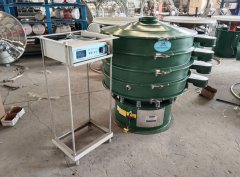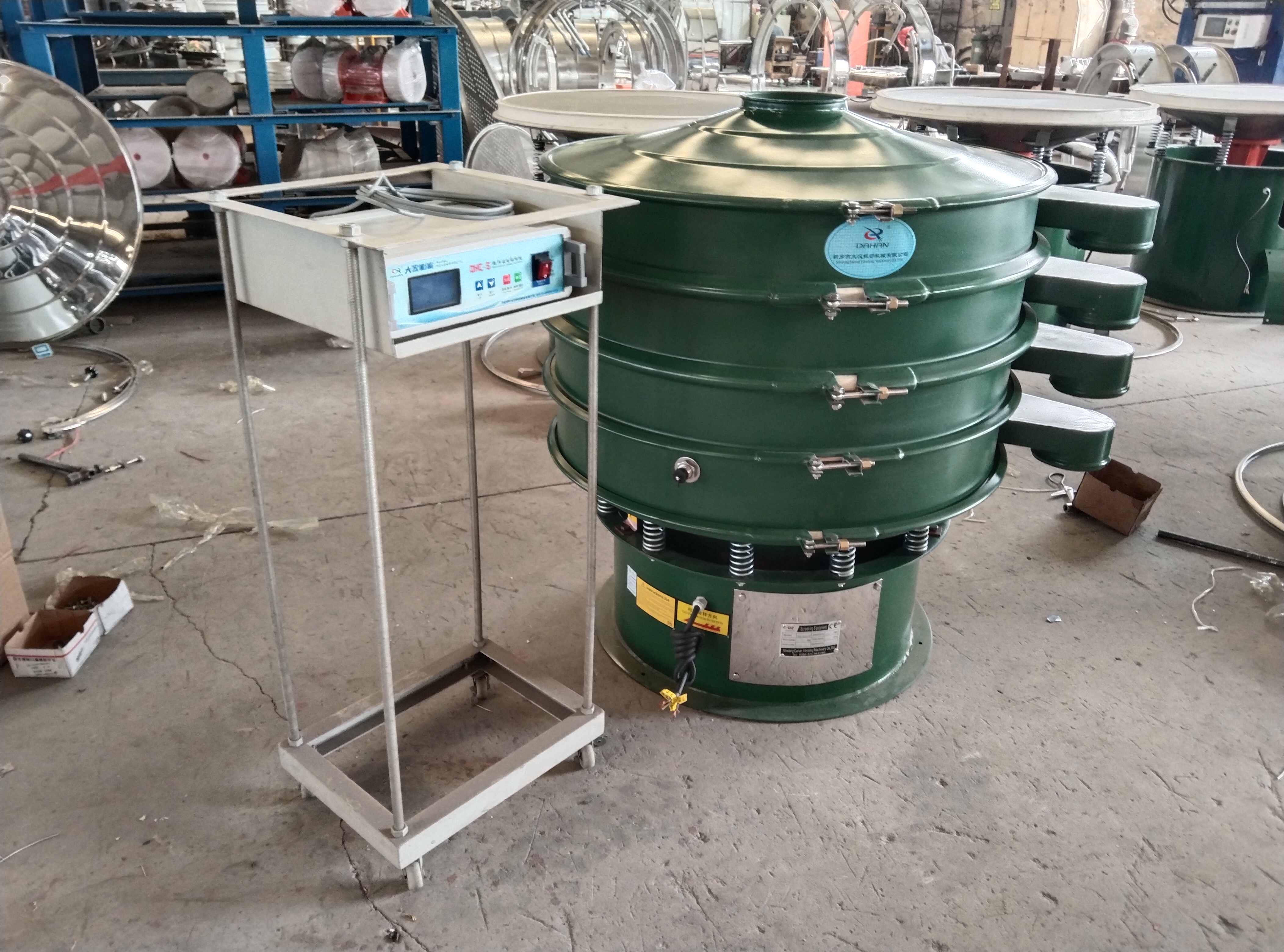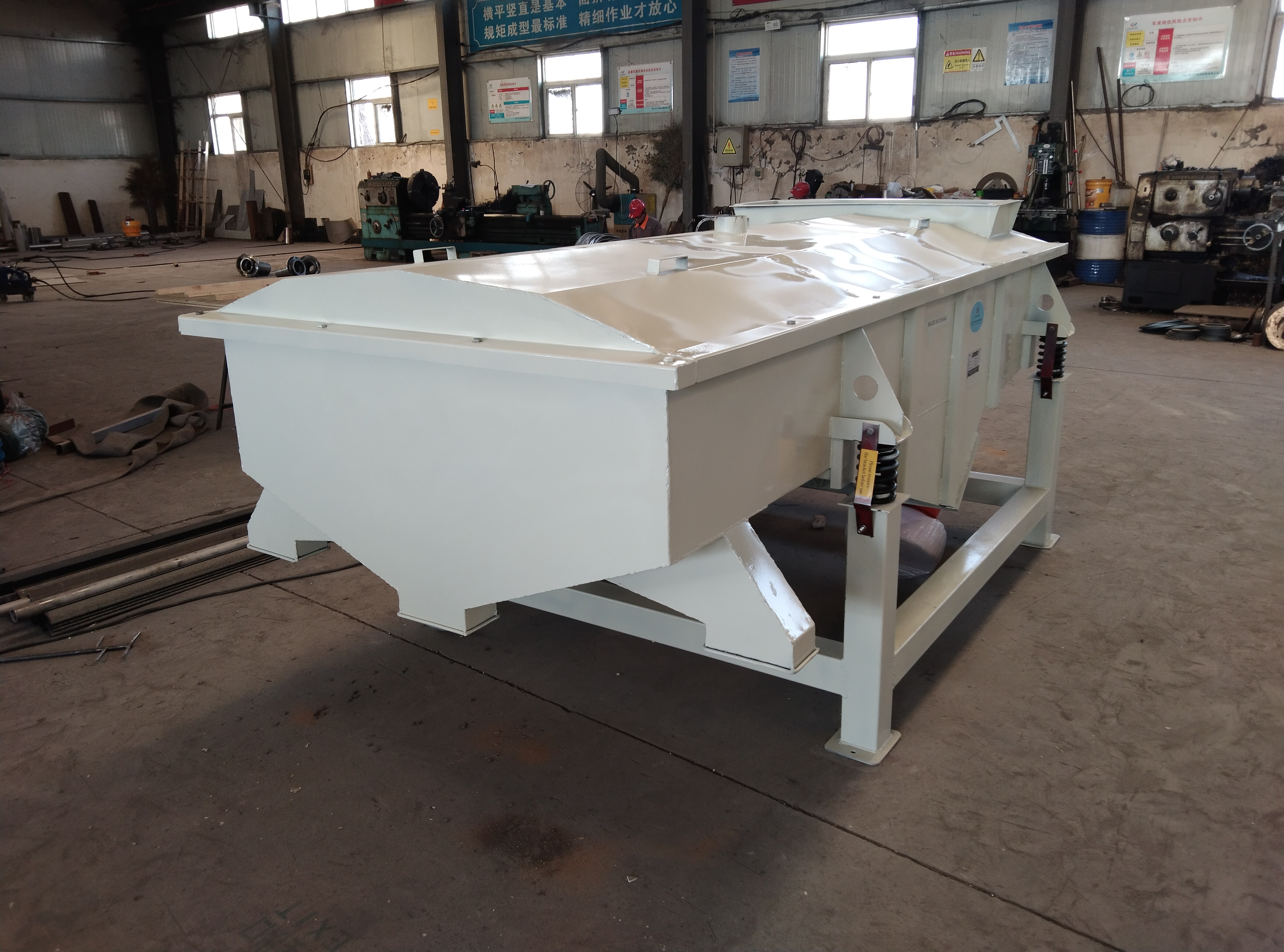
Cement materials can be divided into two categories according to their moisture content: dry materials usually have a moisture content of less than 5%, and are characterized by strong fluidity and easy dust generation; wet materials with a moisture content of more than 5% are prone to particle bonding and screen blockage. According to different material characteristics, the Vibrating screening machine for cement for dry materials can adopt a fully enclosed structure and multi-layer stainless steel screens; wet working conditions strengthen the anti-blocking function and configure an ultrasonic screen cleaning system or elastic screen material. The selection of the screening mesh number needs to be combined with the process requirements. The dry screening range covers 5 mesh to 500 mesh, and the wet working conditions need to adjust the screen size according to the moisture content.

Working principle of Vibrating screening machine for cement
The vibrating screen is a screening device designed based on the three-dimensional vibration principle, and its core power comes from an upright vibrating motor. Eccentric weights are installed at the upper and lower ends of the motor. By adjusting the phase angle of the weight, the rotational motion of the motor can be converted into composite vibration in the horizontal, vertical and inclined directions. This vibration mode enables the material to form an outward-expanding involute motion trajectory on the screen surface, thereby achieving screening.
During the screening process, the material presents a complex three-dimensional spatial motion: the horizontal plane projection is a circular trajectory, and the vertical plane projection is an elliptical trajectory. By changing the phase relationship between the upper and lower weights, the expansion amplitude of the material motion trajectory can be adjusted. For example, increasing the vertical amplitude can increase the material throwing height and enhance the probability of passing through the screen; adjusting the horizontal vibration frequency can optimize the distribution uniformity of the material on the screen surface.
Types of Vibrating Screening Machine for Cement
Dry Cement Material Characteristics
The moisture content of dry cement material is usually less than 5%, and its physical characteristics are good particle dispersion and strong fluidity, but it is easy to produce fine dust. During the screening process of such materials, dust control and accurate particle size classification need to be focused on. The type of rotary vibrating screen suitable for dry cement is mainly standard configuration models. The equipment needs to be equipped with a fully enclosed dust cover and a negative pressure exhaust interface, such as the XZS series rotary vibrating screen, whose multi-layer screen design can simultaneously achieve impurity removal and multi-level particle size separation. The material of the screen is preferably 304 stainless steel woven mesh, with a pore size range of 0.28mm to 4mm, and a corresponding mesh span of 5 mesh to 500 mesh. For the processing needs of ultrafine powder, polyurethane screens with mesh sizes above 200 can be used, and their self-cleaning performance can effectively alleviate the problem of fine particle adhesion.

Wet cement material characteristics
When the moisture content of cement material exceeds 5%, its physical properties change significantly: the particles form liquid bridge forces due to surface moisture, resulting in adhesion and agglomeration, and the risk of screen hole blockage increases exponentially. For such working conditions, special models with anti-blocking functions must be selected, such as a vibrating screen equipped with an ultrasonic cleaning system, whose high-frequency vibration can effectively destroy the agglomeration structure of the material. The screen material needs to be upgraded to 316L stainless steel perforated plate or nylon material. The former has excellent corrosion resistance, while the latter achieves self-cleaning through elastic deformation.

Screening mesh of vibrating screening machine for cement
The selection of dry screening mesh should follow the principle of step-by-step classification. In the pre-screening stage, 10-40 mesh screens are recommended to remove impurities with a particle size of more than 2mm; for finished product classification, 60-200 mesh screens are required. For example, the cement grinding station uses a double-layer screen configuration of 80 mesh + 200 mesh to achieve the simultaneous separation of ordinary Portland cement and special cement. For fine powder processing, a special screen for airflow classification of 325 mesh or above is required, and a negative pressure adsorption device is required to ensure the efficiency of micro powder collection.
The setting of the mesh number of wet screening needs to consider the effective utilization rate of water to the sieve hole. When processing materials with a moisture content of 6% to 8%, it is recommended that the sieve hole size be enlarged by 1.5 times compared with the dry working condition. For example, the dry 200 mesh screening needs to be adjusted to 120 mesh. For example, the rotary vibrating screen configured at the discharge end of the tube mill uses a 14-mesh screen in the wet impurity removal link, successfully controlling the maximum particle size of the material entering the powder selector to below 1.4mm, which improves the screening efficiency by 18 percentage points compared with the traditional vibrating screen.
Dry screening uses high-mesh stainless steel screens to achieve micro-powder classification, while wet conditions rely on anti-blocking design and screen size optimization to ensure continuous operation. A properly configured Vibrating screening machine for cement can achieve a dry cement clinker screening efficiency of more than 92%, and increase the wet rotary kiln clinker processing capacity by 18%. Equipment selection requires comprehensive consideration of material moisture content, particle size distribution and screening accuracy requirements. For example, when processing sand and gravel with a moisture content of 8%, the use of polyurethane-wrapped screens and elliptical motion trajectory configuration can effectively balance screening efficiency and equipment stability.